Sometimes having a rarity in life will cost you more, but it will definitely be worth it! The Philodendron Pink Princess just might be your girl!
She is considered a rarity, but also a great find, if you are able to locate one. Let’s talk about her and all the things that make her so desirable.
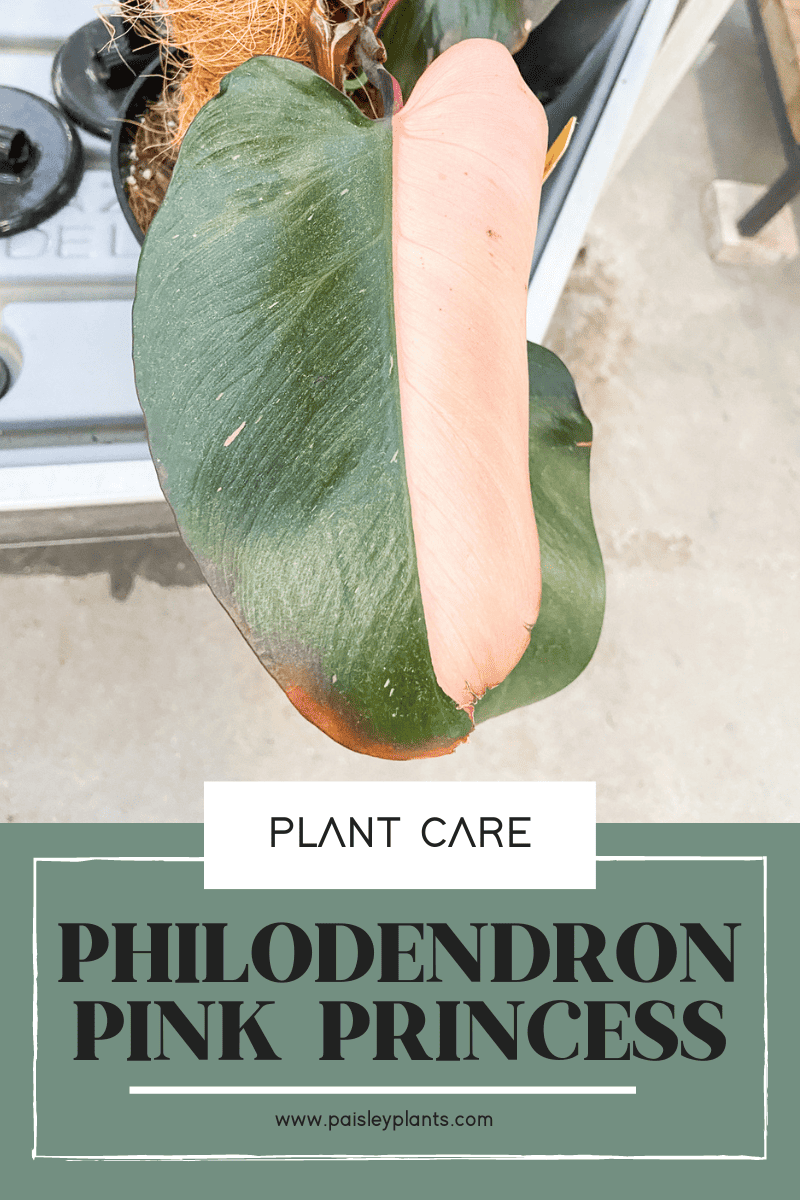
Table of Contents
Background and History
The origin of these beautiful tropical plants are somewhat a mystery. It does not exist in nature, but is a hybrid of Philodendron erubescens which are native to Central and South America. They are a lab created hybrid that only dates back to the 1970s.
They are considered rare and are grown from a tissue culture. This makes them costly due to their slow growth and limited availability. They can sell for as much as $100 for a mere cutting and up to almost $2,000 for an established plant! I did, however, stumble upon one at my local nursery for just $30 recently. I naturally scooped it up right away to bring it home!
The Philodendron Pink Princess has burgundy stems, deep glossy, greenish black foliage with heart shaped leaves that have a bubble gum pink variegation. They will grow up to two feet tall and 18 inches wide when grown as indoor plants. In nature they’ll use their aerial roots to climb up other plants and trees!
Toxicity
As with other philodendrons, the Pink Princess Philodendron plants are toxic to both humans and pets. It contains the calcium oxalate crystals which can cause toxic symptoms when ingested. These plants should be kept out of reach of both small children and pets for this reason.
Pink Princess Philodendron Care
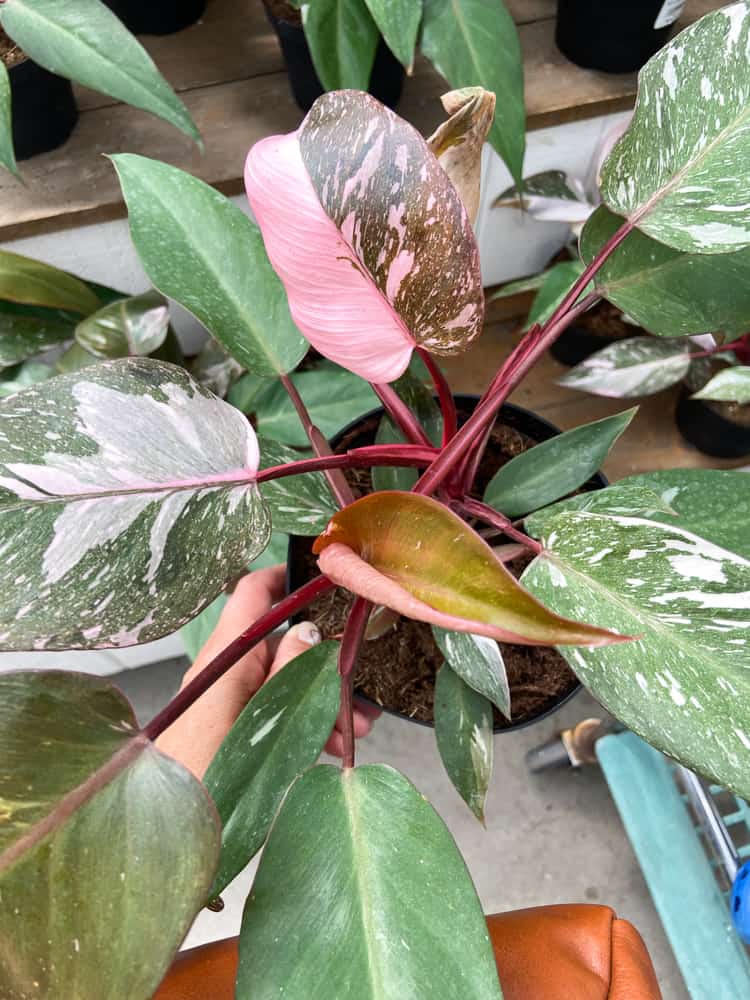
Water Requirements
You should water this beautiful plant once weekly during the growing season. If the top 1-2 inches of the soil are dry, then it is time to water your plant. Pour water into the pot until the excess water drains out the bottom. This way the plant won’t sit in water and will ensure the roots aren’t becoming too wet.
Also, if your plant is visibly wilting, this is a good sign your plant needs to be watered. In order to maintain a healthy plant, be sure to keep a regular watering schedule. Keep the soil moist, but not soggy. An overwatered plant can develop fungal diseases and attract pests.
Light Requirements
Your Pink Princess should get at least 8 hours of bright, indirect sunlight per day. This can be either with natural sunlight or under grow lights. Be careful not to let your plant sit in direct sunlight, however, as this can harm the variegated leaves and cause them to turn yellow.

Soil Requirements
The ideal soil mixture for your Pink Princess is a loose, well- draining soil rich in organic matter because it is an aroid. This would consist of soil that is one part standard potting soil, one part perlite, and one part orchid bark. You can either buy this ready made or mix it yourself.
You can also use a mixture that is 40% peat moss or coco coir, 30% orchid bark, 20% perlite, and 10% worm castings. This mixture is very beneficial for allowing good aeration and moisture retention. This would be a mixture that you can mix yourself for best results.
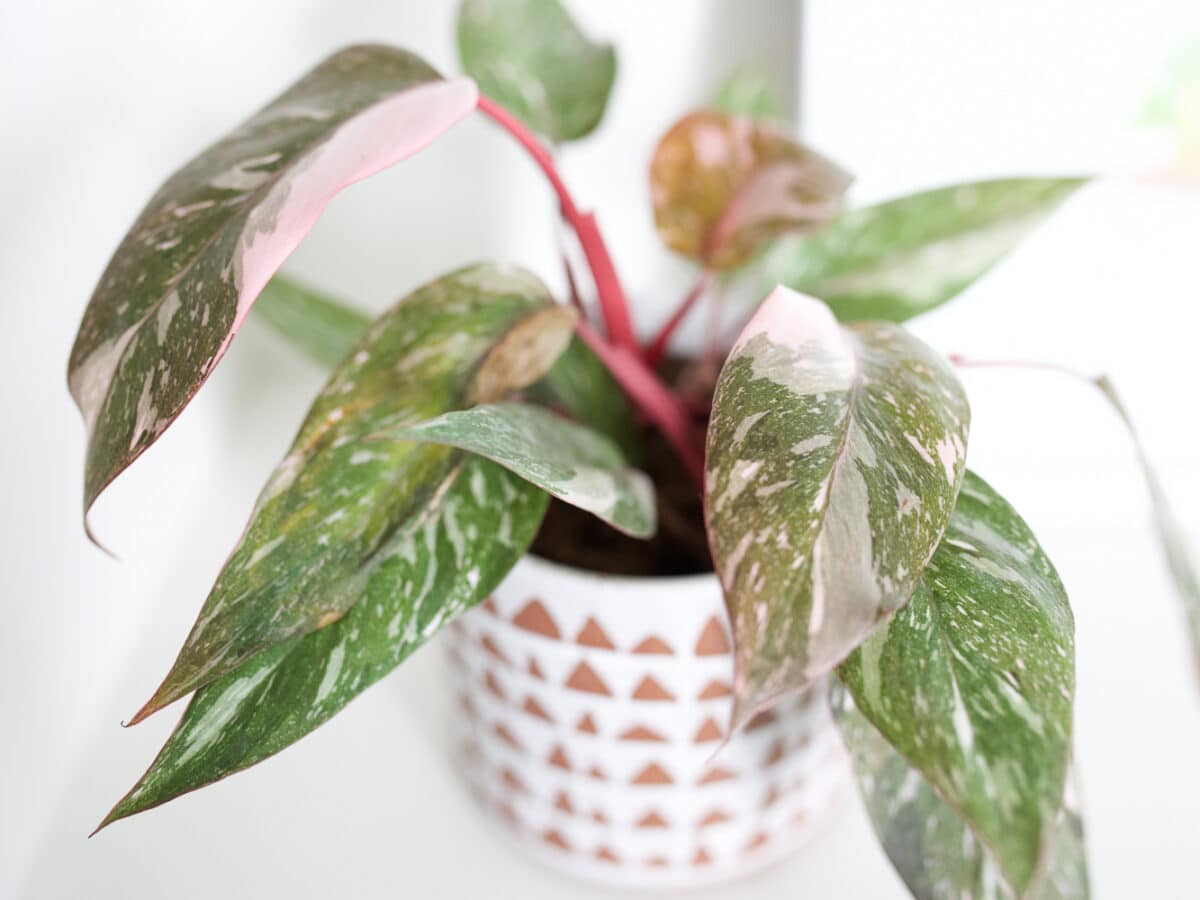
Fertilizing Requirements
It is best to fertilize your Pink Princess about once a month or even every 4-6 weeks only during the growing season, which is during the spring and summer months. You won’t need to fertilize it during the dormant season, which is the fall or winter months, however.
Also, be sure that when you fertilize your rare plant, that the soil is moist. Putting the fertilizer on dry soil can potentially burn the roots of the plant. You should use a slow release liquid fertilizer mixed according to the directions on the package.
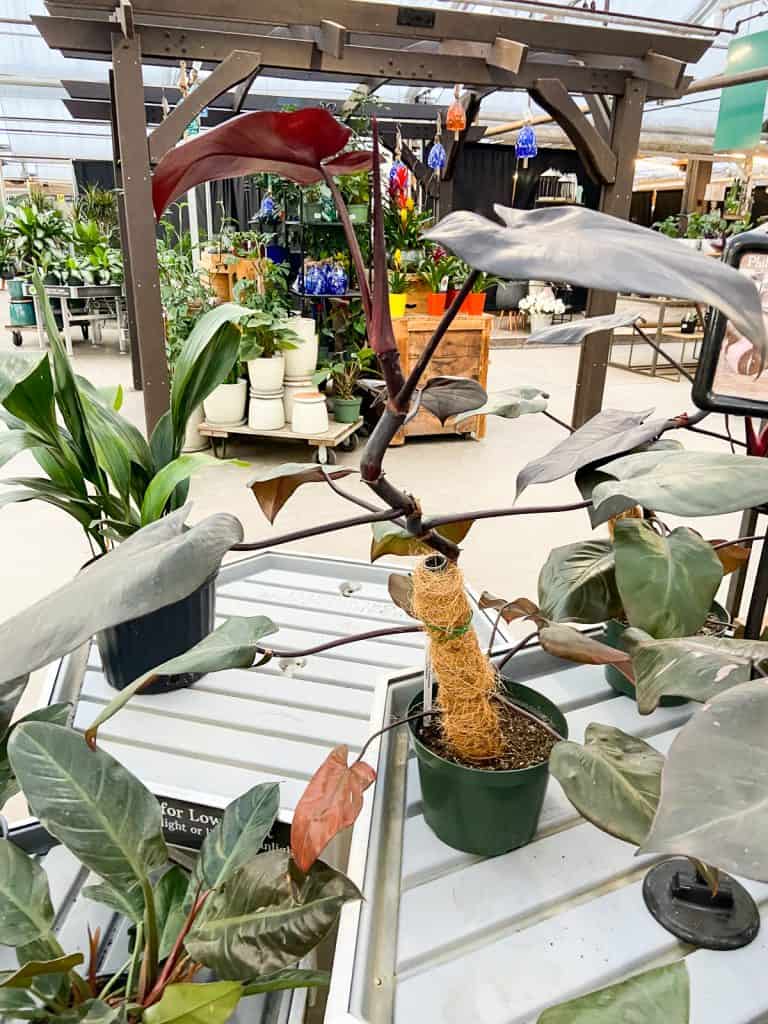
Temperature and Humidity Requirements
The optimum temperatures for your Pink Princess are between 65 and 85 degrees F. Your Pink Princess is considered a tropical plant and will thrive in these temperatures.
They can survive in temps as low as 55, but won’t grow if it gets much cooler and freezing temps will kill them, so use caution if you put your plant outdoors during the summer months.
The best humidity level is at least 50%. You can use a monitor to see how dry the air is and keep it at least 50%. You can also use a pebble tray for added humidity and mist your plant a few times a week for added humidity.
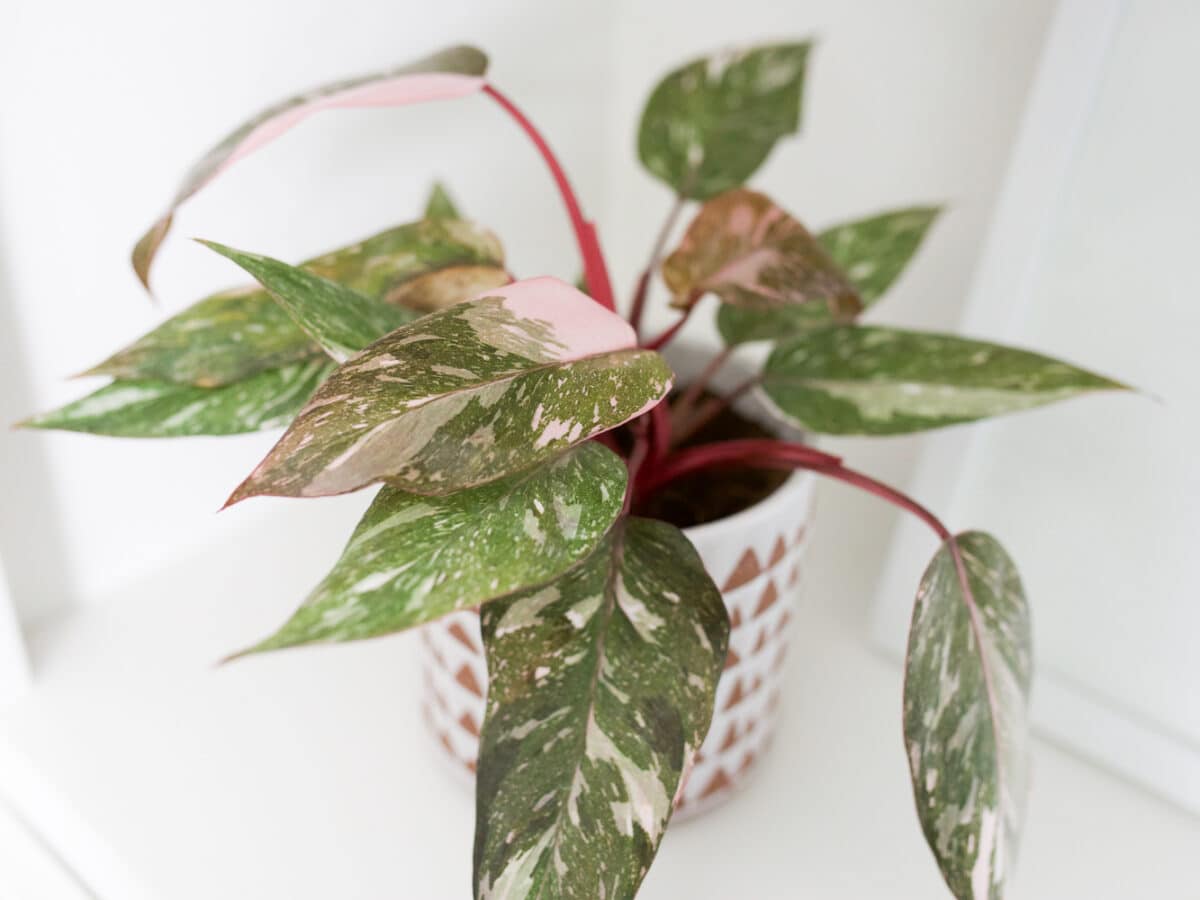
Pests and Diseases
The most common pests that affect the Philodendron Pink Princess are spider mites, aphids and mealybugs. You can use neem oil to treat all three of these pests.
If you do discover any of these pests on your plant, you should immediately isolate your plant from your other plants, then treat it. This will help prevent the spread of any of the pests to your other plants.
Two of the most common diseases for the Pink Princess are root rot and rust spot. The root rot is a result of overwatering your plant where the roots become saturated and lack oxygen. Avoiding overwatering will generally help prevent this from happening but just know, the best way to kill your plant is by overwatering it!
Rust spot is the result of a fungal infection. Brown spots will appear on the leaves to indicate there is fungus. You will then need to remove any infected leaves. Be sure to remove the entire leaf from the plant. This should solve the problem.
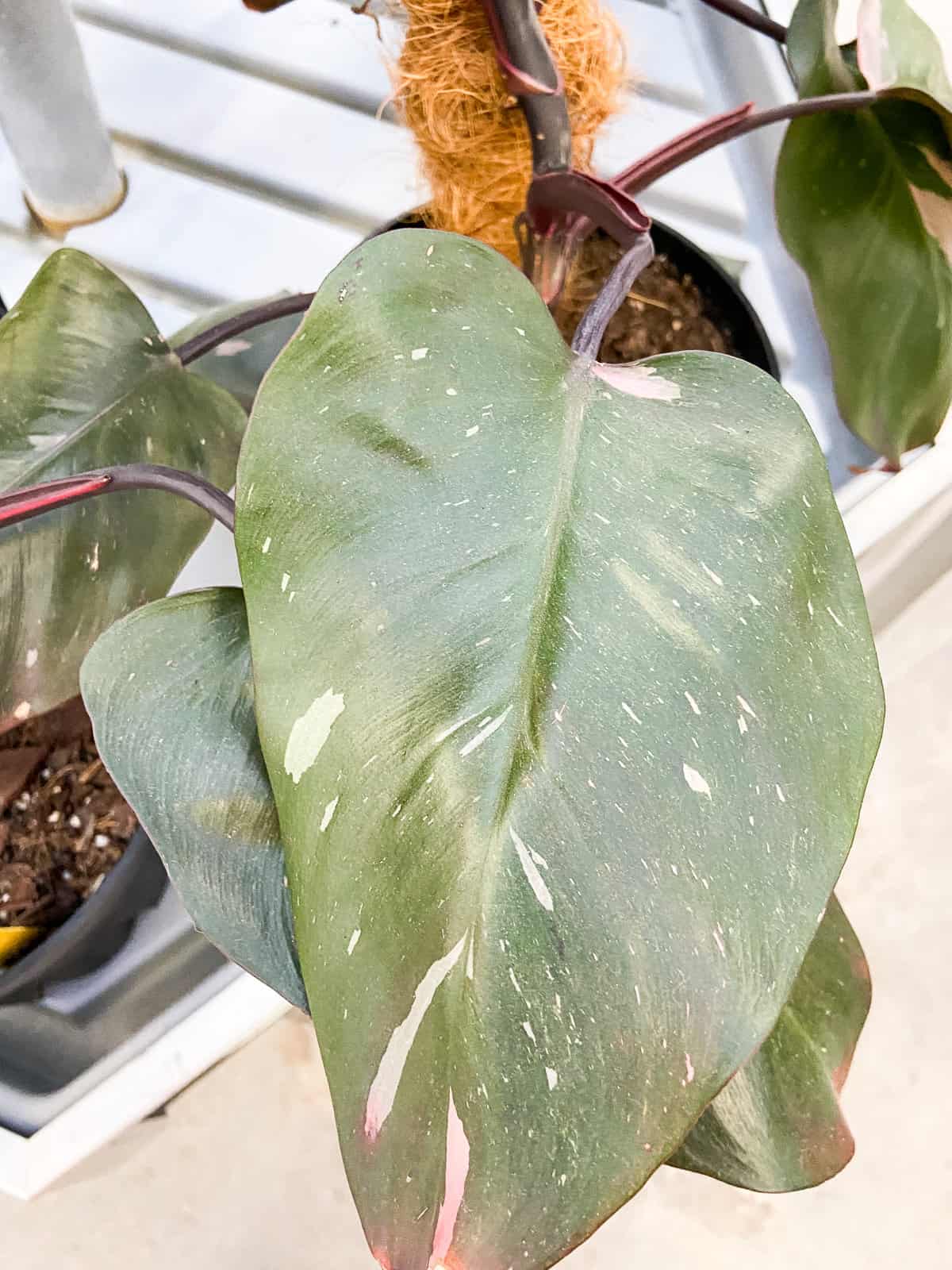
Pruning and Repotting
The best time to prune your Pink Princess is in the spring right before the growing season begins. You will want to prune the plant by cutting the stems between nodes.
The nodes are the small bumps where each leaf meets the stem or vine. You can then root the stem cuttings in water until it gets new roots or new growth, then repot that cutting for a new plant.
Most philodendrons only need to be repotted once every 18 months to two years. This is the same for your Pink Princess. As long as the roots aren’t growing out of the drainage holes in the bottom of the pot, you should be okay.
Common Problems
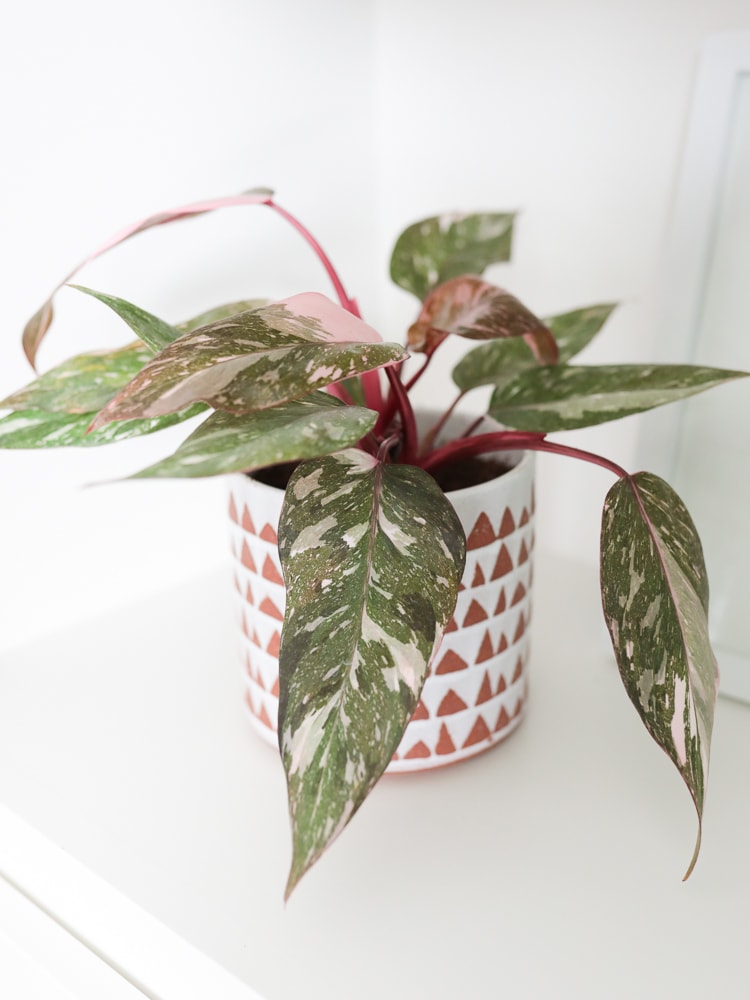
Leaves turning brown
Brown leaves can be caused by the plant not getting enough humidity. Remember that your plant loves high humidity. Be sure the humidity levels are high enough to keep you plant happy!
Leaves turning yellow
Yellow leaves can be a result of either over or underwatering your Philodendron Pink Princess plants. It can also be from too much direct sunlight. Be sure you maintain a regular watering schedule so your plant remains healthy. Also, be sure your plant is in only bright, indirect sunlight, not direct sunlight to prevent leaf burn.
Akso, remember as your plant ages, the outer leaves will naturally yellow and die. Don’t be too concerned if one or two leaves turn yellow. You can just remove them and this will solve the problem.
Curling Leaves
This can be caused by chemicals in tap water, overwatering or temperature stress. You can let the water you use from your tap sit overnight to help the chemicals neutralize. This should solve any problems with chemical stress on your plant.
Be sure to not overwater your plant. This can lead to root rot. Also if you use distilled or rainwater, it can help avoid a buildup of salts and minerals in the soil. Keep the soil evenly moist by only watering when the plant is dry about 2” down into the soil.
Avoid keeping your plant in drafty areas. Keep it away from air conditioning or heating vents. Keep a consistent temperature of between 65 and 85 degrees F and your plant should be fine.
FAQS
Yes, it will climb if you provide it with a trellis or moss pole for it to climb on. It won’t get too tall, usually only about two feet, but it will take to the support you give it and climb if you choose to do so.
You need to give your Pink Princess plenty of bright, indirect sunlight to keep the color. Variegated plants such as the Pink Princess require more sunlight than other houseplants.
Both plants look quite similar, but they are certainly different. The Pink Princess is stable as it takes place due to the natural process whereas the variegation of the Pink Congo happens due to chemicals injected into the leaves of the plant.
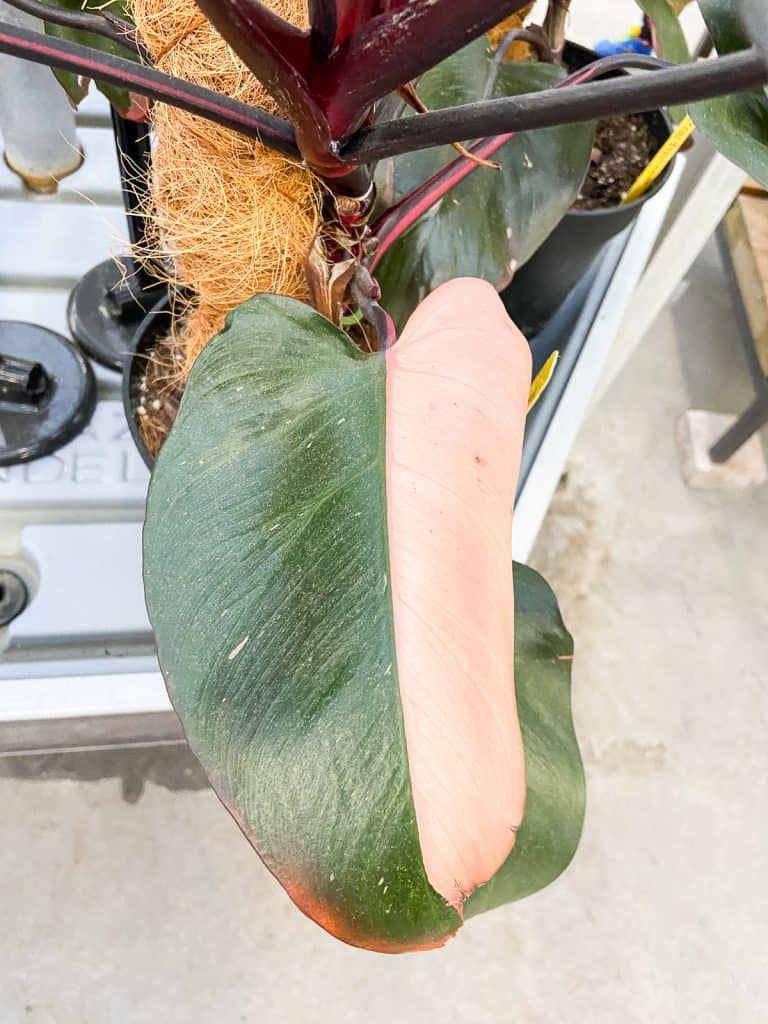
In Conclusion
So, if bubble gum pink and green are your colors, would you consider buying a Philodendron Pink Princess? Or would you just consider having one to add a different take on the colors of your houseplant collection? Any way you slice it, this interesting and colorful beauty would be worth owning even just for a conversation piece.
Why don’t you try finding one and adding it to your own collection? After all, it might be the beginning of something you will continue into the future for a long, long time – adding unique plants to perk things up. As always, keep on growing!
